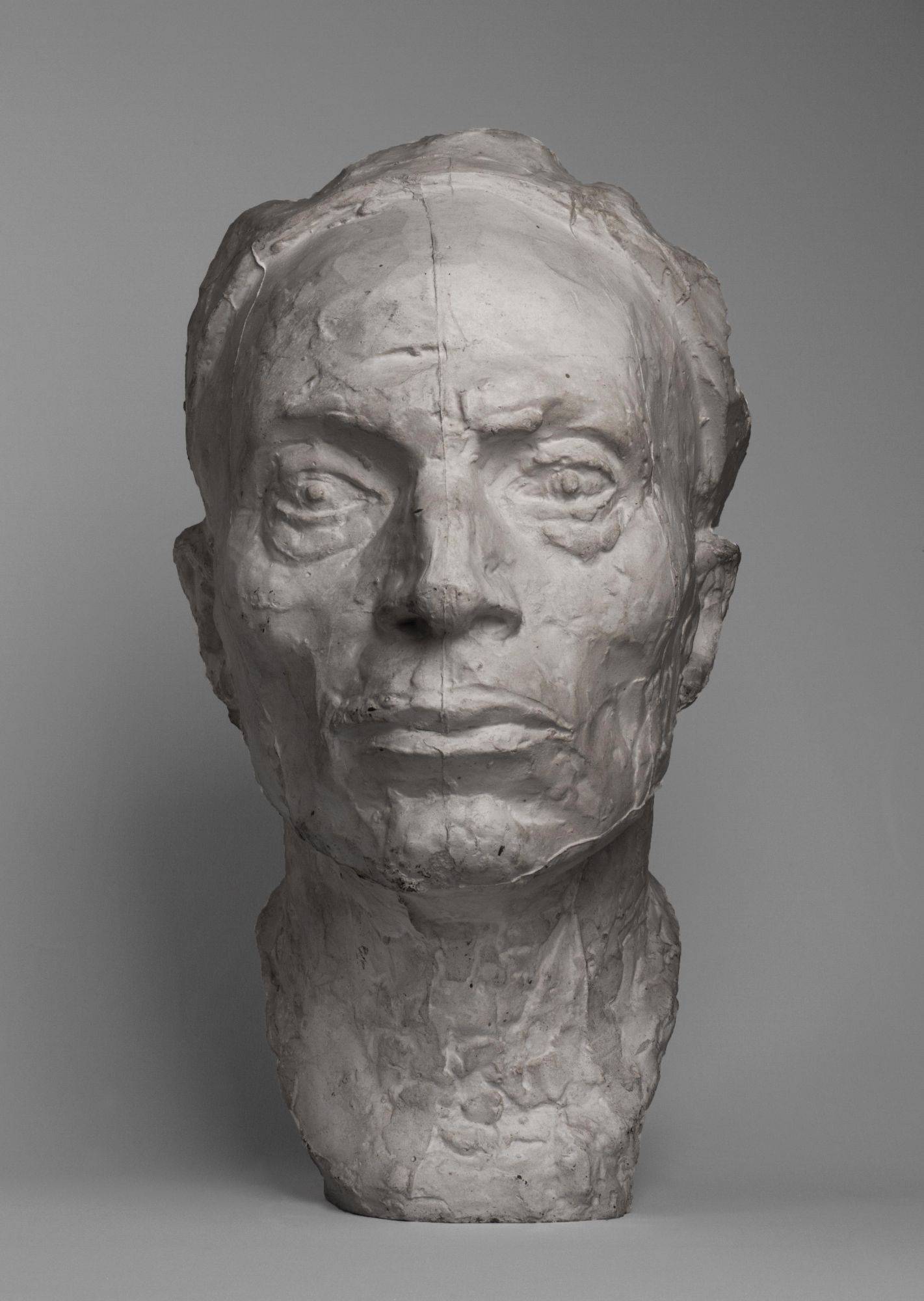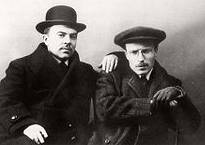Self Portrait

Matveev, Aleksandr Terent'evich
1878 - 1960
Self Portrait
Gypsum
44cm
1940
PROVENANCE:
Family of Malakhin, pupil of Matveev.
LITERATURE:
Certificate Matveev Museum, Moscow

Pavel Kunznetsov and Alexandr Matveev circa 1910
This fine Gypsum is the original of Matveev's famous self portrait found in Gypsum and Bronze dated variuosly 1939, 1940 and 1941. Matveev was the leading sculptor in St Petersburg of the Soviet period and had a large following of pupils.
A.T. Matveev was a pupil of P.P. Trubetskoy, who held a tenure at Moscow Painting, Sculpture and Architecture College. At the turn of the 19th century, Trubetskoy juxtaposed his art, which was grounded on the achievements of Impressionism, with the two main trends in the Russian plastic development - academism and naturalism. The impressionist style had a considerable impact on the earlier works of Matveev, but his outstanding talent enabled him to surpass Trubetskoy - by rejecting the "cult" of the first impression, of graphic and dynamic treatment of form and placing structure, mass, weight and architectonic as secondary. By and by, Matveev, a man of great and sharp intelligence, endowed with vivid imagination, created his own style in tune with his outlook and temperament. He developed his own method which makes his works immediately recognizable and idiographic. The essence of this method is very simple and it boils down to the organic combination of classic principles of sculpture (balanced compositions, the tranquil clarity of arrangement, harmony of parts, the sense of the inner rhythm) with the direct study of models. These principles laid the foundations of the pedagogic art school in the Soviet sculptural practice which now bears the name of the Matveev School.
From 1918 Matveev became head of the sculpture workshop at the Academy of Fine Arts. Over two hundred pupils belonged to the Matveev workshop, but only a small group of Leningrad sculptors can be rated among immediate followers of the traditions of his school. Moscow pupils of Matveev (A. Stemkovsky, S. Mirenskaya, I. Blummel, D. Mitlyansky, M. Nikogosyan and others) are not associated with the direct followers of Alexander Terentievich since his tenure at Moscow Surikov Art College was short and the traditions of the local sculpture school, to which these masters belonged, were very strong. All his graduates shared one quality: building on the achievement of their teacher, they, in the final count, created their own plastic languages and each found his own way in art. The plastic thinking which had been instilled in them throughout their studies excluded superfluous imitation of outer features of the model, and this is what distinguishes the better-known representatives of this school: M. K. Anikushin, B. E. Kaplyansky, A. L. Malakhin, N. S. Mogilevsky, A. M. Ignatiev, L. M. Kholina, L.Y. Eidlin, M. A. Weinman, M. M. Kharlamova.
In the 1930s, the department of sculpture at the Academy of Fine Arts had been divided into two workshops. One was headed by A.T. Matveev, the other by Matvei Manizer, an equally good sculptor in his own distictive and very different way. Manizer's workshop was more popular with students, who were free to make their choice of a teacher. Manizer qualified students for monuments and monumental sculpture. His manner as a teacher was rather strict, he aimed at accuracy in representation of models, and was more from the classical tradition. The pedagogical system of Matveev was totally different. It was based on a conscientious attitude toward the model, on its conceptualization and constructive translation. Contrary to Manizer, Matveev did not regard work on sculpture as a sheer representation of a model but as the construction of form in accordance with the knowledge of Nature and the laws of architectonics. He taught his students to avoid blind copying of models, and to observe every move, each time, when confronting a model being made to set and solve a certain task. He thought it psychologically vital to search for a solution which would preserve the source of his inspiration and render it to the spectator. A nude in the works of Matveev and his disciples is the personification of an idea of beauty whereas Manizer sets to capture a classical type of beauty more derived from the tradition of ancient Greece.
Forms of plastic beauty reveal inner resources of man, his character - this was the attitude towards the purpose of sculpture that Matveev acquired from his interpretation of antique art. A human body is built in accordance with the laws of architectonics in which all parts are interdependent like supporting members in an architecture. Free interpretation of a model stems from the profound knowledge of the laws of nature. A model in Matveev's workshop was always studied on the basis of precise and close representation of its anatomy and proportions. Thus, those who wished to go further than to merely represent a model, those who strived to create images, that is, a new artistic reality, flocked to Matveev.
Alongside statuary arrangements, the master and his school were engaged in portraiture. The aim of this genre was also not to render likeness (which, according to Matveev, was the prerogative of the photography) and, for that matter, the mood, but to express a durable inner state, the character of the model by revealing the unique consonance of rhythms and forms of the face.
Matveev's personal journey in sculpture, his talent and authority, independent and unapt to compromise, engendered discontent and excited envy on the part of some of his colleagues. Their grudge bolstered his suspension from tenure at the Academy in 1948.
Yet in the early 1960s, his school enjoyed its second heyday. Through works of his disciples, the plastic system of the great master, which over the course of time has become classic, keeps on having an elevating impact on contemporary young masters.
This powerful and famous sculpture remains a testament to this outstanding Russian sculptor and a rare survival outside of a Russian musuem.


